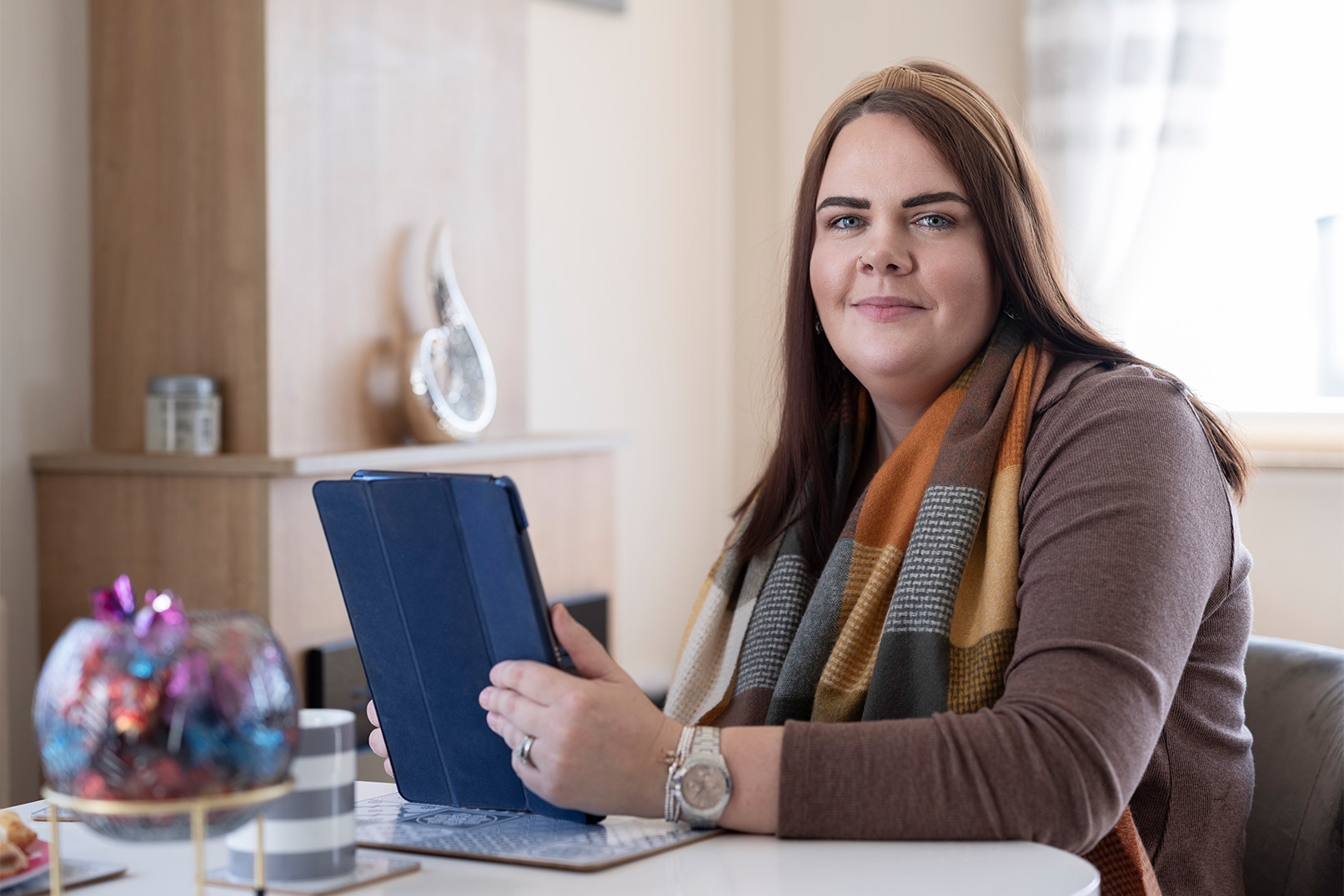
Sarah's Story
“Since catheterising, I've got my life back.” – Sarah
Sarah did not connect her bladder issues to her Multiple Sclerosis until 4 years after her initial diagnosis. Intermittent catheterisation seemed daunting at first as she was unsure what this really meant, but she quickly mastered the process and now enjoys more time with her family with less worry about her bladder.

Sarah’s diagnosis
Sarah's journey with Multiple Sclerosis started with a strange feeling in her legs. She had just given birth to her daughter, and initially, she thought she was simply exhausted. However, a couple of days later, she found she couldn’t even pick her daughter up, so she went to the hospital.
After a round of tests, a junior doctor suggested to Sarah’s husband, James, that she might have MS. However, she was told she would have to wait until she had a relapse before getting the official diagnosis. Sarah’s relapse came one year later.

Sarah’s bladder and making the connection to her MS
One year after her first relapse, Sarah started experiencing bladder issues. She would go to the toilet, but she felt as if her bladder never really emptied. When she wasn’t on the toilet, she would suddenly urinate, without ever having felt the urge to go.
“I would hide from the world because my bladder was unpredictable.” – Sarah
At first, she tried to manage the situation using pads, but they couldn’t handle the volume of urine that would come out. At no point did Sarah connect her bladder issues with her MS. Only when attending an MS workshop for children with her daughter, Charlotte, was the connection between her bladder issues and MS apparent.
“They had set up little stations that explained how MS affects the body. We got to one station that had a sports bottle filled with water. The nurse at the station said it represented the bladder, and she squeezed it. Water came out uncontrollably. Then she let go, and it stopped. But there was still water in the bottle, or bladder. At that moment, I thought, “That’s what’s happening to me.” And I realised my MS is linked with my bladder issues. That was four years after my diagnosis.”
Sarah

Discovering intermittent catheterisation
Catheterisation was suggested as a way to help Sarah better manage her bladder. Sarah was sceptical at the start, as she had a preconceived notion of what this meant.
“When they suggested I use an intermittent catheter, I initially thought no, because I imagined it would be an indwelling catheter. I never imagined that what I use now is an actual catheter.”
